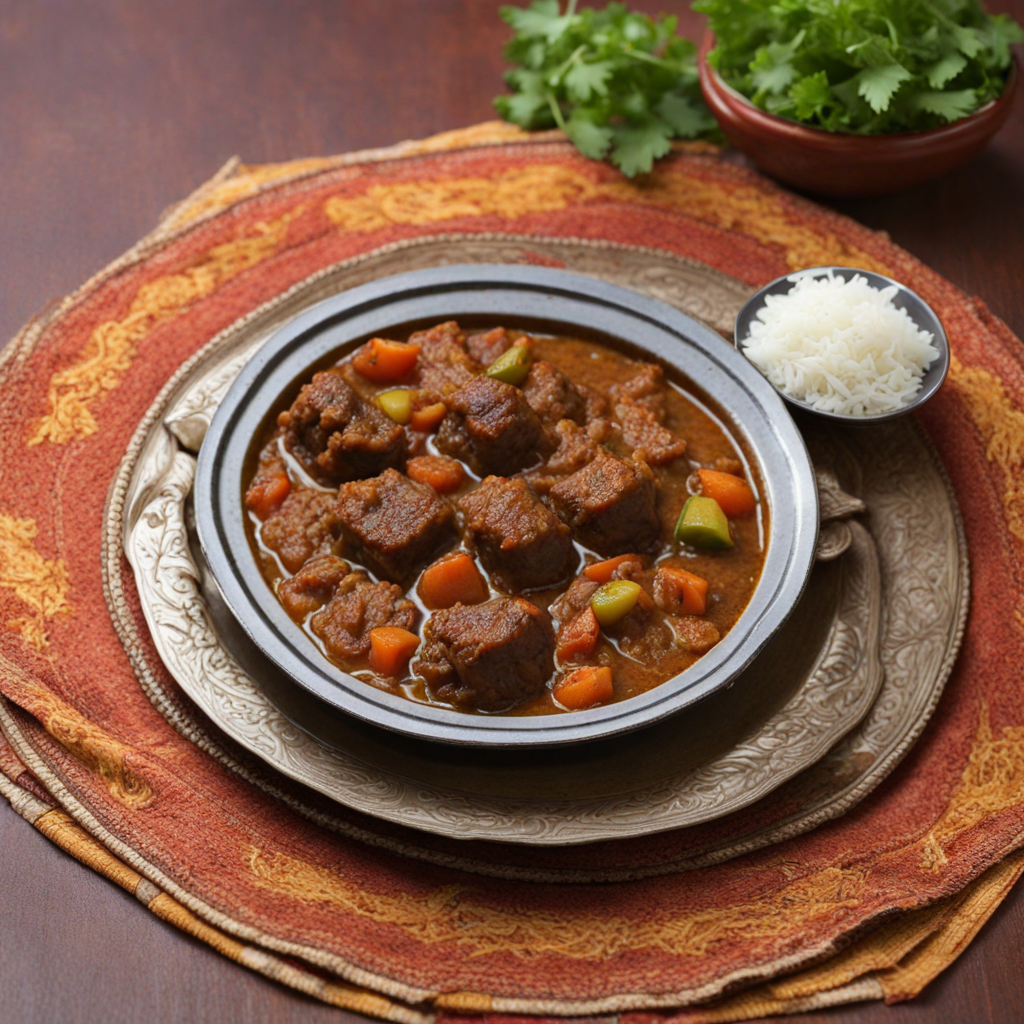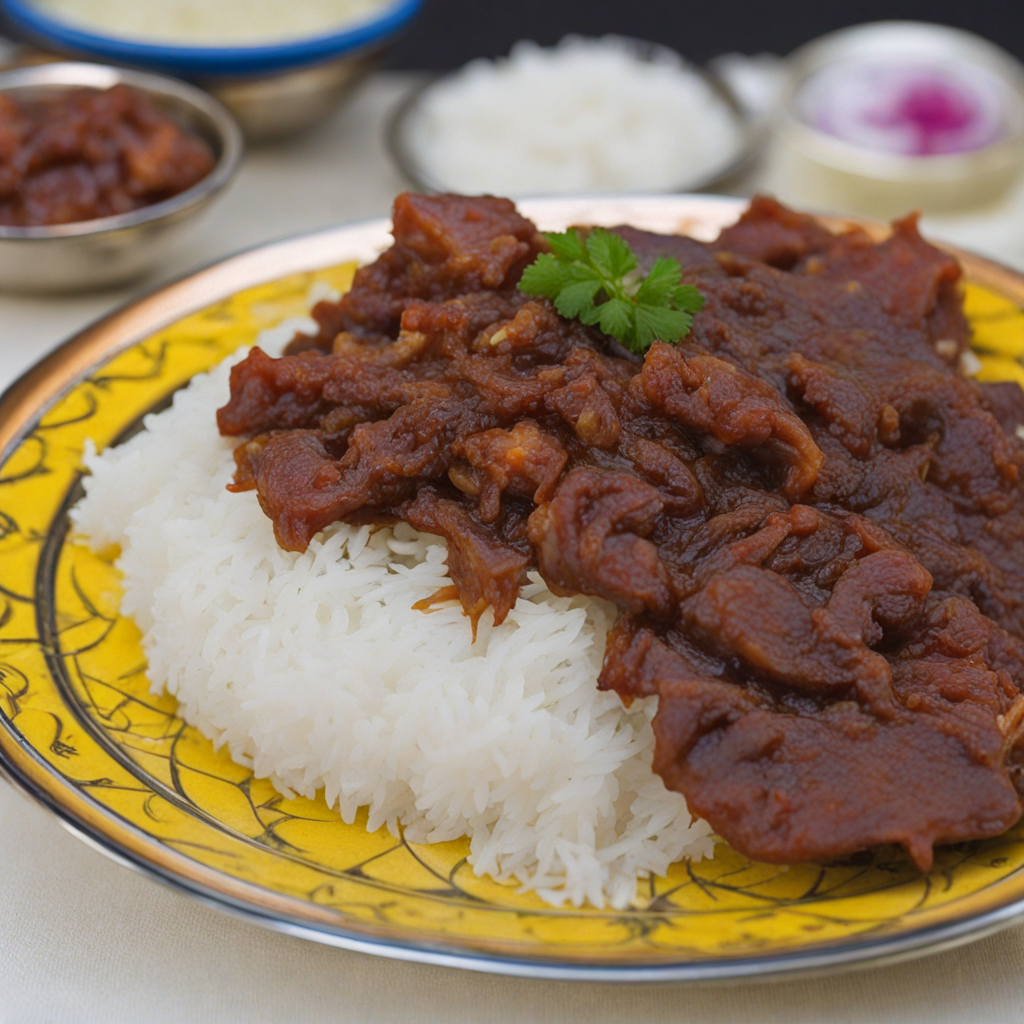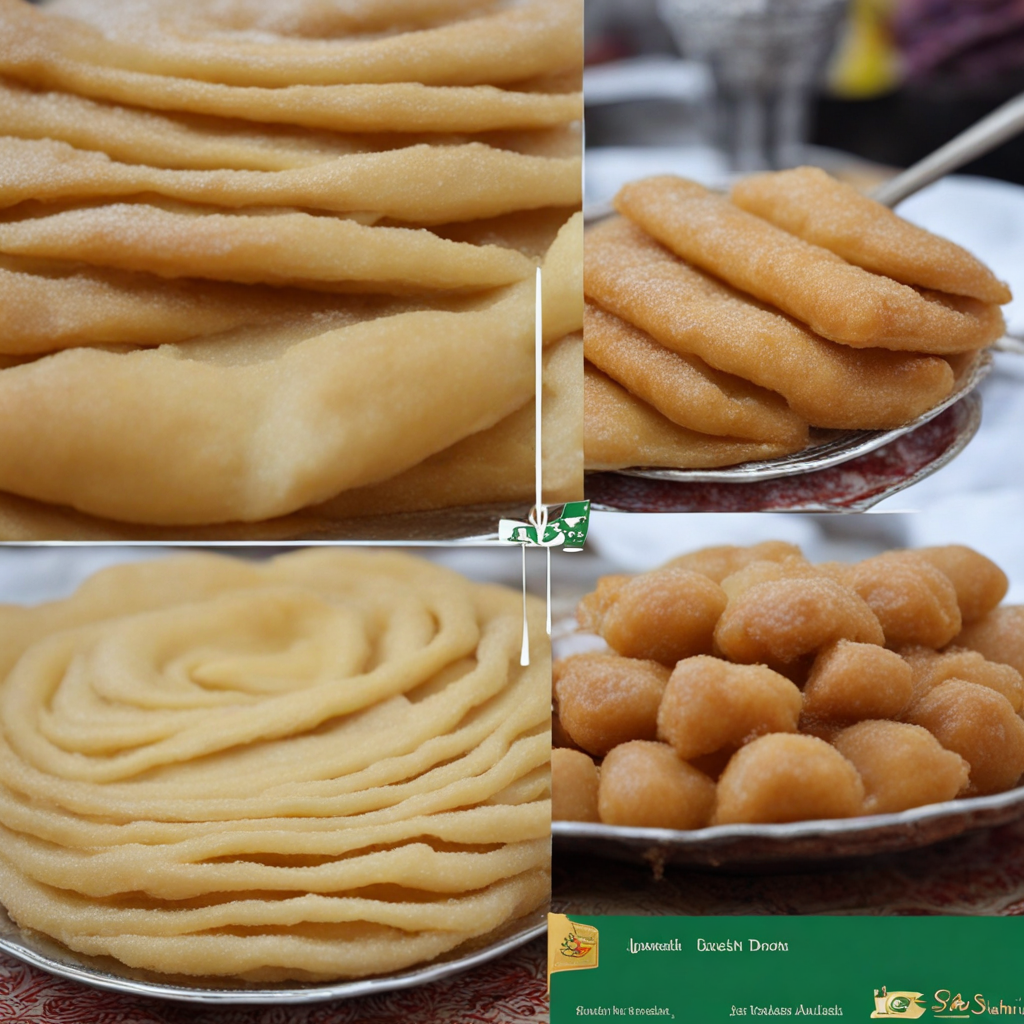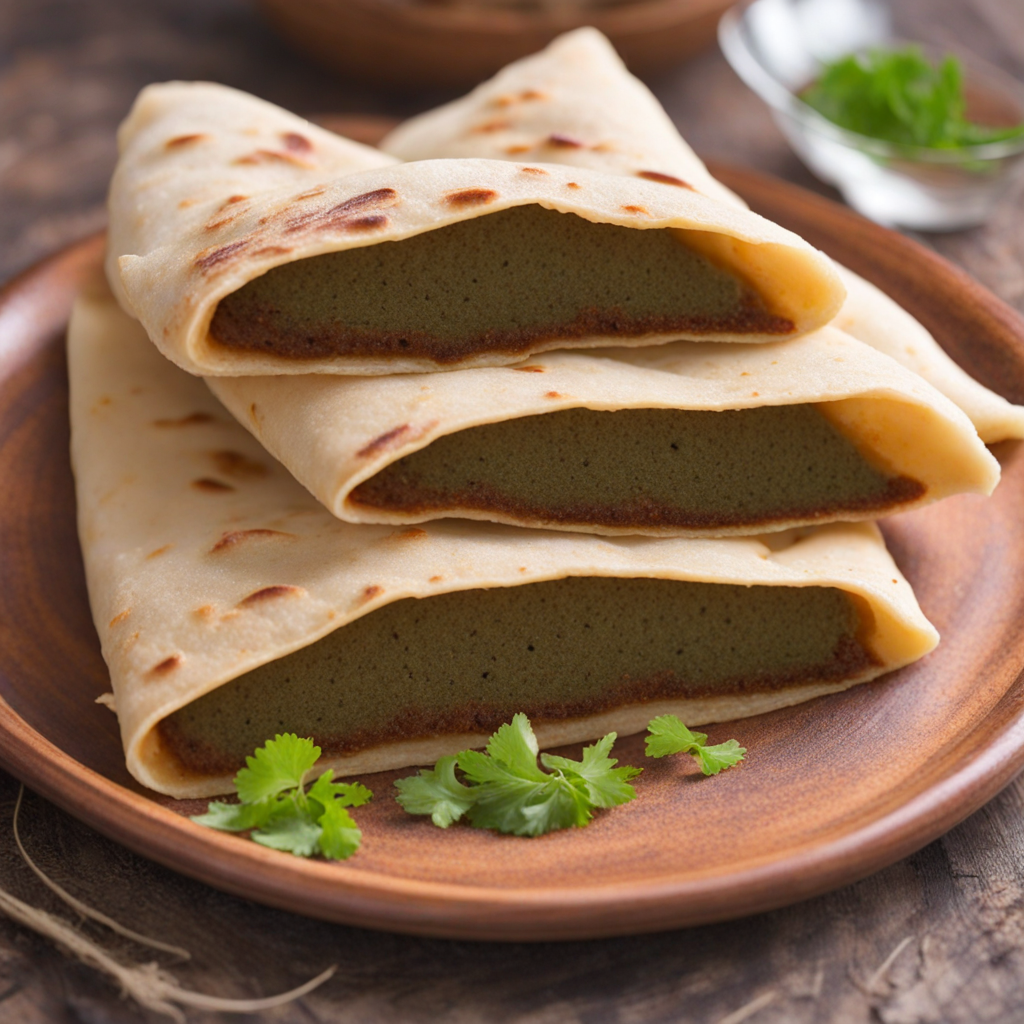Skoudehkaris
Skoudehkaris is a fragrant and flavorful rice dish that embodies the rich culinary traditions of Djibouti. This dish features a base of long-grain rice, which is cooked to perfection and often infused with a blend of aromatic spices such as cumin, coriander, and cardamom. The rice is typically accompanied by tender pieces of meat, commonly lamb or chicken, that have been marinated and slow-cooked to achieve an irresistible tenderness. The warm spices and savory meat create a delightful harmony of flavors that is both comforting and exotic, making Skoudehkaris a compelling choice for adventurous eaters seeking new taste experiences. The preparation of Skoudehkaris is an art that highlights the importance of layering flavors. The dish usually begins with sautéing onions and garlic until golden brown, releasing their natural sweetness. This is followed by the addition of tomatoes and a variety of spices, which form a rich base for the meat. The marinated meat is then introduced, allowing it to absorb the aromatic concoction. Finally, the rice is added, and the entire mixture is simmered together, allowing all the ingredients to meld and develop a deep, satisfying flavor profile. Each bite is a celebration of the spices and the tender meat, offering a taste of Djibouti's vibrant culinary heritage. Accompanying Skoudehkaris are often fresh salads and tangy sauces that provide a refreshing contrast to the hearty main dish. The combination of flavors creates a delightful balance, inviting diners to savor each element of the meal. Traditionally served during special occasions and gatherings, Skoudehkaris is not only a dish but also an experience that brings people together. For those looking to explore the diverse tastes of Djibouti, Skoudehkaris is a must-try that promises to transport your palate to a world of warmth and hospitality.
How It Became This Dish
The History of Skudikaris: A Culinary Gem from Djibouti In the heart of the Horn of Africa lies Djibouti, a small yet culturally rich nation that boasts a unique culinary heritage reflective of its strategic location and diverse influences. Among its many culinary delights, one dish stands out for its distinctive flavors and historical significance: Skudikaris. This traditional Djiboutian dish, often enjoyed in homes and at communal gatherings, is a testament to the fusion of cultures that have shaped the region over centuries. Origins of Skudikaris Skudikaris, also known as "Skud," traces its origins to the Somali and Afar communities, which are the predominant ethnic groups in Djibouti. The dish serves as a culinary bridge between these communities, showcasing their shared history and mutual influences. Though the precise origins of Skudikaris are difficult to pinpoint, it is believed to have emerged during the late 19th century when Djibouti was becoming a prominent port for trade and maritime connections. The term "Skudikaris" is derived from the Somali word "skudi," which refers to a type of stew or sauce, while "karis" means "to cook." This indicates that Skudikaris is fundamentally a dish that is cooked slowly, allowing the flavors to meld and develop over time. Traditionally, it consists of a combination of meat—often goat or beef—and vegetables, seasoned with a variety of spices that reflect the culinary practices of the region. Cultural Significance The cultural significance of Skudikaris extends beyond mere sustenance; it embodies the communal spirit and hospitality of Djiboutian society. Traditionally, Skudikaris is prepared during special occasions, such as weddings, religious celebrations, and family gatherings, symbolizing unity and togetherness. Serving this dish is an expression of generosity, as it is often enjoyed in large quantities, shared among family and friends. In Djiboutian culture, food plays a critical role in forging social bonds and facilitating communication. The act of gathering around a communal dish of Skudikaris fosters camaraderie and strengthens relationships, highlighting the importance of community in Djibouti's social fabric. As such, the dish has become a symbol of identity for Djiboutians, representing their rich history and diverse cultural influences. Development Over Time As Djibouti evolved into an important trade hub in the late 19th and early 20th centuries, the culinary landscape began to reflect the influx of various cultures and flavors. The influence of Arab, French, Ethiopian, and Indian cuisines can be observed in the preparations of Skudikaris. The introduction of spices such as cumin, coriander, turmeric, and cinnamon, as well as cooking techniques from these cultures, enriched the traditional recipe. The French colonial presence in Djibouti from the late 19th century until independence in 1977 also left its mark on the culinary practices of the region. While Skudikaris retained its traditional essence, it began to incorporate elements of French cuisine, particularly in terms of presentation and dining practices. The use of fresh vegetables, such as tomatoes and onions, became more prominent, reflecting a shift towards a more balanced and diverse diet. In recent decades, as globalization and modernization have influenced Djibouti, Skudikaris has adapted to changing tastes and lifestyles. Contemporary chefs and home cooks alike have experimented with variations of the dish, infusing it with modern techniques while remaining true to its roots. For instance, some have introduced new proteins, such as chicken or fish, to cater to diverse palates. Moreover, the rise of social media has allowed for a broader appreciation of Djiboutian cuisine, including Skudikaris. As food enthusiasts and bloggers share their experiences and recipes online, the dish has gained recognition beyond the borders of Djibouti, drawing interest from culinary explorers worldwide. This newfound visibility has led to a resurgence of interest in traditional Djiboutian dishes, prompting both locals and visitors to take pride in their culinary heritage. Skudikaris Today Today, Skudikaris remains a beloved dish in Djibouti, served in homes and restaurants alike. Its preparation is often a communal event, with family members coming together to chop, cook, and share stories as the stew simmers on the stove. The aroma of spices wafting through the air evokes a sense of nostalgia among Djiboutians, reminding them of their roots and cultural traditions. In contemporary Djibouti, Skudikaris is often accompanied by a staple side of rice or flatbread, such as "lahoh" or "injera," enhancing the overall dining experience. The dish is typically enjoyed with a side of fresh salads, providing a refreshing contrast to the rich and savory flavors of the stew. As Djibouti continues to navigate the complexities of globalization while cherishing its cultural heritage, Skudikaris stands as a proud symbol of the nation’s culinary identity. It serves as a reminder of the historical interactions that have shaped Djibouti’s food landscape, while also embodying the resilience and adaptability of its people. Conclusion The story of Skudikaris is one of cultural convergence, communal bonding, and culinary evolution. From its humble beginnings among the Somali and Afar communities to its status as a cherished dish enjoyed by many, Skudikaris encapsulates the essence of Djiboutian identity. As the world becomes increasingly interconnected, the appreciation for traditional dishes like Skudikaris serves as a reminder of the rich tapestry of flavors, stories, and cultures that define the global culinary landscape. Through each bowl of Skudikaris shared among friends and family, the spirit of Djibouti lives on, celebrating the past while embracing the future.
You may like
Discover local flavors from Djibouti







